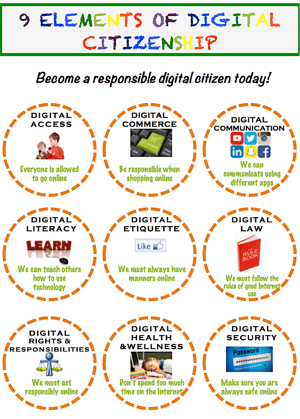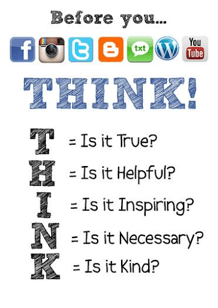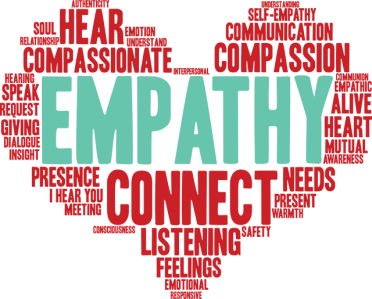Every parent wants their child to receive an education that is comprehensive and teaches skills applicable to the world outside the classroom. But how does this work in a cyber charter setting? PA Virtual teacher Amy Dajczak takes a look at how cyber charter schools infuse real-world skill training with a virtual education.
Over the years, sharp criticism of modern education has targeted a perceived lack of real-world skills and learning.
But let's face it: The definition of "real-world skills" is constantly changing. Rather than using a model driven purely by recitation and testing — the information from which is easily forgotten — how do we as educators make knowledge “stick” in the students’ minds? How do we help develop skills that they will encounter outside the classroom?
We as educators must keep up with the world’s technological advances, and embrace them as we address the future needs of the students. One of the best ways to propel current, real-world skills is with a cyber charter school education. In this post, I’m going to share how cyber schools, such as PA Virtual, are teaching these skills in a digital setting — and preparing students for the future.
Experiential, Project-Based, and Hands-on Learning
Scenario: A new app is under development. It is expected that designated teams successfully collaborate and gather the necessary data before launching it. Other departments, such as marketing and finance, should be consulted and also engaged.
Starting at a young age, students must be exposed to collaboration. They should experience the success and potential pitfalls of an idea.
.jpg?width=569&name=Blog_RealWorldLearning_experientiallearning-min%20(1).jpg)
(Image courtesy of Mohawk College)
A great way to make content “stick” is to make it real, as opposed to a theoretical, word-based exercise. By putting this situation into students’ hands, and letting them build, mold, and adapt it, we’re engaging students in a concrete experience while applying new skills. This concept of “project-based learning” is the foundation of the experiential learning model. In the past, a teacher conducted the critiquing. But how realistic is that? For a real-world experience, the initial creation should be analyzed by a team.
What does this teach?
- Speech skills
- Proactive discussions
- The creation of valid arguments and debates
- Overcoming the fear of failure
- Thoughtful creations
You can’t simply provide the opportunity for discussion without ensuring that it’s successful. Relational competencies feed into this system of experiential learning. When providing a project such as this, teachers practice and demonstrate proper email etiquette. They exhibit the potential pitfalls that can occur with a poorly written subject line. If confronted with a language barrier, students learn that concepts such as talking points are available to ensure all thoughts can be heard.
At PA Virtual Charter School, this concept is supported and supplemented with a variety of programs used in daily communications. Teachers use Google programs, such as Sheets and Slides, which include discussion columns that permit collaboration. Students utilize sites such as Padlet to record ideas and generate discussion. Hands-on projects can be as simple as a recycled creation in Kindergarten, or the creation of an online game in older grades. All of these examples benefit from the presentation to peers and development of healthy teamwork.
Our K12 curriculum provides ample supplies for hands-on learning experiences. Elementary students are exposed to a variety of art materials, as well as an art teacher who infuses career exploration into the curriculum, even at an early age. Using a blend of digital platforms and physical art assignments, students have the opportunity to generate truly unique creations. For music, students use musical instruments in a home-based setting, but sometimes draw on objects from their immediate environment. The music teacher takes their existing materials into account, and supplements with asynchronous instruction intended to promote creativity at students’ own paces.
And don’t forget about science! Applying real-world scientific inquiry isn’t limited to a laboratory setting. PA Virtual’s K12 kits include an assortment of science assignments, and are used during synchronous and asynchronous learning to inspire hypotheses, test experiments, and use critical thinking to draw conclusions. While most of the necessary elements are in the kits, students have the freedom to perform these labs at home, and supplement additional materials and labs, as appropriate.
When we awaken these different creative outlets, we are not only inspiring the arts, but also reinforcing STEM concepts. Students are cultivating their engineering skills, diving into the details of photography, and exploring architecture and math concepts. These skills generate collegiate interests and propel career opportunities.
Critical Life Skills
Scenario: You check your watch. It’s time to head to a meeting with marketing for your proposed new app. In three more hours you have a meeting scheduled with finance. In between those sessions, you are reflecting on a colleague’s idea and applying it to your presentation. In the back of your mind, you’re confirming that today is payday and the mortgage payment is due next week.
Parents balance many responsibilities at any given moment. To do so requires experience in and understanding of critical life skills. These skills make tasks efficient and successful, but how can we teach them to students virtually?
Time Management
Students in synchronous classes require the ability to recall the times of their specific synchronous meetings, and balance their asynchronous work. They must actively plan their day around their physical and online assignments. Through schedule documents, time management and scheduling apps, and other tools, students learn the importance of being where they need to be when required — and understand personal responsibility and culpability.
Critical Thinking
Students are encouraged to collect data and information from different resources. A large portion of such research requires identifying, comparing, and ethically utilizing the information found. Using the many platforms available to us, it is their responsibility to take that learning and present it in a manner that makes sense to them. This requires thinking about the project at hand, and the audience they are addressing.
For example, a Kindergarten class finds five facts about an animal. They take their new knowledge, write a sentence and draw a corresponding image. This is inserted onto a PowerPoint presentation that their teacher uploads to the class. The student is encouraged to use their own words when presenting.
Lifestyle Management and Safety
“Every student in a primary (generally grades K-3), intermediate (generally 4-6), middle school (generally grades 7-9) and senior high (generally 10-12) programs must be provided with planned instruction that is aligned with academic standards in health and physical education.” - Pennsylvania Department of Education
As a school that runs under the PA Department of Education, PA Virtual ensures that students are remaining healthy and fit. This entails physical activity lessons that are worked into asynchronous meetings. It also maintains the need to provide ample time for physical activity, as well as built-in breaks from screen time.
Financial literacy, while not necessarily a direct requirement of the state, is also reinforced. In the elementary years, this requires an understanding of saving and investing. Teachers not only explore counting money, but also how to make individual goals and save for the future. There are also real-world applications, such as exploring the actual amount spent on everyday items, with assignments that incorporate finding the total on a receipt, or identifying if you have enough money for a purchase.
General safety is taught as early as Kindergarten through our social studies lessons. Each student learns their address and phone number in case they should ever be in an emergency. Fire Safety week is taught and strengthened with firefighters as classroom visitors, and hands-on practice of "stop, drop, and roll." Our students also learn general situational awareness, applicable both in their homes as well as in the community, so as to stay safe.
Navigating Digital and Physical Spaces
There must be a balance between working digitally and physically. Students should not, for example, rely fully on spell check, nor hide behind these efficient digital walls. Information is at their fingertips, and some communication can be completed without face-to-face interactions. However, it is also crucial that they be able to converse respectfully and competently in person as well.
Teachers make a sincere effort to generate assignments that blend both worlds. In the younger grade levels, students are encouraged to write along with their teachers. Older students can still conduct research at a library and handwrite their responses. The aforementioned collaboration necessitates breakout rooms and other programs that encourage interaction among our introverted students. Those same students now have the means and time to fully prepare their thoughts, generating a sense of confidence during collaborative exercises.
Digital Responsibility and Citizenship
Let’s say that the app you're developing is a social platform with a variety of nuances — and has been identified as having the potential for great connection, but is also at risk for misuse in the digital space. Meanwhile, you learn that, according to dosomething.org, about 37% of young people between the ages of 12 and 17 were cyberbullied in 2019. Furthermore, you hear that recent article, welivesecurity.com explained that there were 1.4 million reports of identity theft in 2019, according to welivesecurity.com, a cybersecurity research and news outlet.
The virtual world can be a dangerous place. While it brings people together, it undoubtedly generates connections that can cause risk and harm to yourself and loved ones. It is our responsibility to educate young minds about these potential concerns and how to be proactive.
Digital citizenship is the act of “continuously developing norms of appropriate, responsible and empowered technology use,” according to digitalcitizenship.net. We now raise and teach digital children, and students must grow and develop their awareness of digital citizenship from a very young age in order for them to be responsible adults later in life. There are actually nine elements of digital citizenship that PA Virtual teaches students each and every day.

(Image courtesy of digitoday.wordpress.com)
How can we encourage these nine components? Activities such as brainstorming device-free moments, stopping online meanness, how to give credit for others' works, and “traveling” safely on the internet all reinforce digital citizenship concepts. Teachers use a variety of resources, such as Commonsense.org’s examples of digital citizenship activities for a range of grade levels.

At PA Virtual we guide students in these areas of digital citizenship by generating lessons and assignments away from the screen. This demonstrates to students the importance of striking a balance between digital and non-digital activities. We provide safe areas for digital access and explain their purposes. Teachers also encourage students to THINK before they make comments or posts.
As students develop digital citizenship skills, they generate a “cleaner” digital footprint. A digital footprint is the actual activity and data that you have left behind on the Internet. This trail can stay attached to your name forever. It is imperative that our students are aware of the effects of their actions online and in person. For example, students are taught to use strict privacy settings on their computers to avoid personal information from being compromised. They are encouraged to keep an updated list of programs and accounts that they are using with safe password protectors. Students are reminded to delete any accounts that are no longer necessary. The use of VPNs is also taught and encouraged in order to limit the ease of personal information leaking onto the Internet. When we not only provide the tools, but also extend them into discussion and explanations, students can develop a concrete platform for their future digital experiences.
Relational Competencies
Scenario: You’re collaborating with classmates as part of a group project, and amidst the different ideas, you boldly state your thoughts, noting that you will be moving forward with your plan for the project. In subsequent email communications, you tell your group partners what you expect from them before your next meeting. What you receive from two of them isn’t what you wanted to see, and another just hasn’t done their part. What went wrong?
A focus on teaching real-world situations requires virtual and physical communication skills. In the above-mentioned scenario, the setting was virtual, but involved physical words and actions — all of which have consequences. There may have been communication, but it wasn’t effective, and working together isn’t the same as collaboration.
PA Virtual teachers stress the importance of interacting in the most effective way possible. Students learn how to correctly compose emails, including thoughtful subject lines, proper greetings, and mature phrasing components. In both collegiate and career settings, proper communication can be the difference between successful group work, and a failure that gets you called into your supervisor’s office. Mature email and interpersonal interactions can earn you praise and growth opportunities, but unprofessional responses may cost you your job.
Whether in a digital or in-person setting, interpersonal connections are inevitable. Students collaborate via breakout rooms, discussion boards, and even on their own through kids messaging apps. In such a room, teachers can have students discuss their views or research on a topic. This encourages students to be open minded, organize their thoughts and effectively engage in colloquy. As they answer questions in a discussion board format, perhaps related to a particular article or case study, student responses must follow requirements that guide them into acknowledging and respecting others’ opinions. Similar to effective communication in a career, students must build off the given thoughts with meaningful insight.
Through this type of group work and related discussions, students learn the importance of celebrating one another’s skills and contributions. One student may be an excellent graphic designer, while another has strong strategic thinking skills. One may have a consideration that falls into a particular political ideology, while another student has an opposing thought — yet both want to solve the same problem. By coming together and engaging in discussion and work in a real-world mimicry, students learn the importance of working communally.

(Image courtesy of teachingwithtechnologyonline.com)
A key component of relational competency lies in empathy. Its relation to digital citizenship makes it a crucial skill for students to learn, especially in our modern age. In the fictional group work scenario, the “subject” did not draw on empathy, and therefore took an impersonal approach that lacked awareness of others’ physical and non-verbal cues — and the situation ended in a type of conflict.
Empathy is important to understanding how people talk and behave online, according to e-learning and curriculum experts at Applied Educational Systems. By encouraging students to pay attention to their words and actions, and think deeply about what they say, teachers set the stage for awareness and personal responsibility. They more deeply appreciate the creation process of an article, musical piece, work of art, and more, and are less likely to plagiarize — which helps develop honesty. Students also build compassion for others when they employ empathy, and are more likely to uplift and support their peers. For example, students with empathy may rally around someone who is cyberbullied, but also try to understand what drove the bully to assault someone in this manner — and help them address those concerns.
Empathy also shows us the true human behind the screen, including their moral or ethical character. Individuals who engage in identity theft and other digital crimes do not typically care about the losses they are creating in the lives of others. Educators, therefore, help students understand proper password management habits, the use of password vaults, and the implications of choosing to engage in unethical behaviors.
Final Thoughts
Families are living and working in a rapidly changing world. Instilling real-world skills in students is a cornerstone of the work here at PA Virtual, providing a hands-on, practical education that will serve them in the years to come. As we look ahead to the future — and consider our triumphs thus far — educators continue to dive into research on the best way to teach students, how to connect their lives to their learning, and what we can do to ensure they are prepared for a brighter future.
 About the Author: Amy Dajczak is a Kindergarten teacher at PA Virtual.
About the Author: Amy Dajczak is a Kindergarten teacher at PA Virtual.
Want to learn more about attending a cyber charter school? Check out our Ultimate Guide to Attending a Cyber Charter School in PA!
Photo credits to Kevin Ku on Unsplash; other graphics as attributed.




Comments